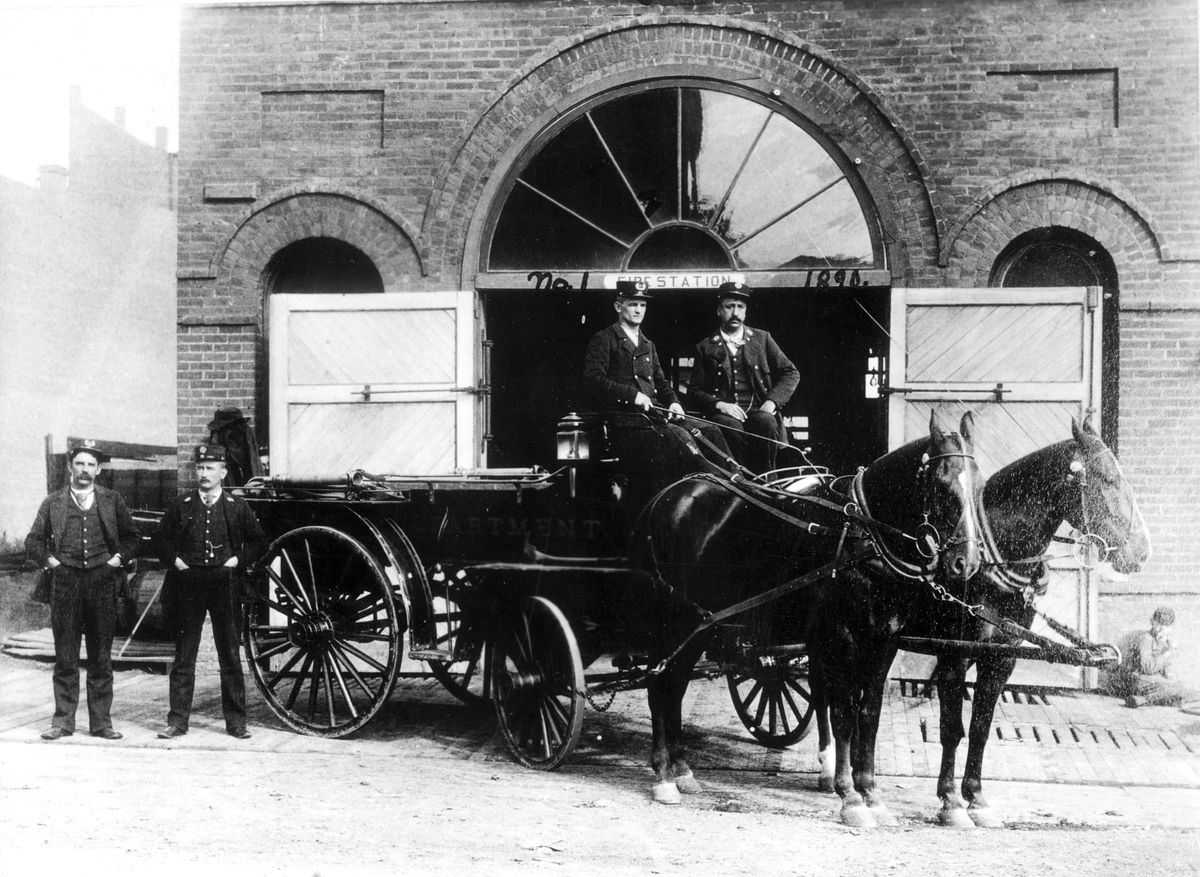Old firehouse home to coffee roaster
Station No. 1 built after Great Fire of 1889

The narrow building at 418 W. First Ave. in downtown Spokane appears rather unassuming considering its role in the city’s history.
It is the still-standing symbol of the city’s rebirth after the great fire that destroyed 32 buildings and 27 blocks of downtown Spokane in the summer of 1889.
It is the original Fire Station No. 1.
Two things were learned after the fire: downtown buildings should be built of brick, and a volunteer fire department was no longer sufficient for a growing city.
Fire Station No. 1, a two-story Italianate brick structure, was built right away and dedicated on Jan. 1, 1890, a ceremony which also included the swearing in of E.P. Gillette as the Spokane Fire Department’s first paid chief.
The building’s use as headquarters for the city’s professional firefighting operation and, indeed, as an operating fire station, has long since passed into history. But back in 1890, the red-brick building proudly housed the new Silsby steam fire engine and the team of horses that pulled it. The building’s story is chronicled in “A History of the Spokane Fire Department,” a 1991 publication by Stephen Emerson of Archaeological and Historical Services at Eastern Washington University.
Emerson’s account describes handsome decorations, molded tin ceilings and a wonderful polished brass pole for firefighters to slide down to reach the main floor. But, apparently, the building was more attractive than practical, with early complaints on record from firefighters of the day.
The building is relatively small – 32x76 feet – and turned out not to have sufficient space to house the horses comfortably (it was the first station to switch to automobiles in 1911), and its doors were too small to accommodate newer firefighting equipment. The 1,800-pound fire bell had to be removed from the bell tower before long, as it was discovered to be crushing the tower’s structure.
And it was expensive. Emerson’s research shows it cost $12,826 to build, but Fire Station No. 3, a wooden structure outside the downtown area, was built in the same year at a cost of $784.
During the Great Depression, four fire stations in the city were closed, including Fire Station No. 1 – on Jan. 1, 1933, exactly 43 years after it was dedicated.
It was then used as a boys club for several years and next as the home of the Riley Candy Co. (1943-’65), during which time an elevator was installed and the building modified in a number of ways. The red brick exterior has been painted, as has the Fire Station No. 1 sign that identified the building for so many years.
It was largely vacant until 1972 when it became headquarters for Bank and Office Supply Co. It later housed a greeting card store, a custom sewing business and other ventures.
About three years ago, Gemelli Coffee Roastery moved in. Paul and Scott Jacobs, Gemelli’s owners, have operated Jacobs Java’s drive-through coffee businesses for 16 years and supplied coffee to many other restaurants and coffee shops in Spokane, but the brothers needed a location downtown when they wanted to expand their enterprise to include roasting coffee.
“I was on my way to meet our roaster when I drove by the building and saw the ‘for rent’ sign,” Paul Jacobs said. “It was the right place and the right time, and the fact that it’s an historic building certainly added to the appeal.”
Gemelli’s tasting room and offices now occupy the second floor of old Fire Station No. 1. But, alas, the brass pole is no longer in place to provide a swift descent to the main floor where coffee bean roasting is done three times a week. Paul and Scott Jacobs have to take the stairs.
But one symbol of the building’s civic role remains: the American flag still flies on a flagpole on the roof.